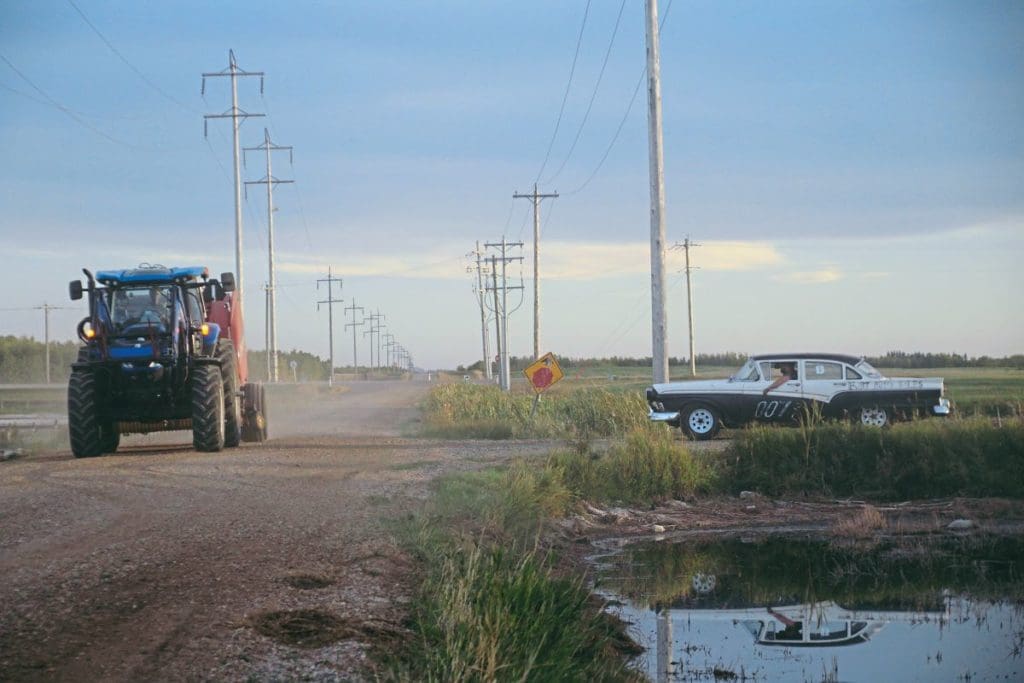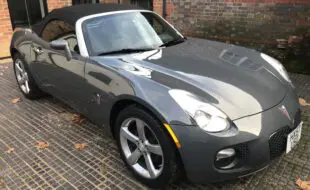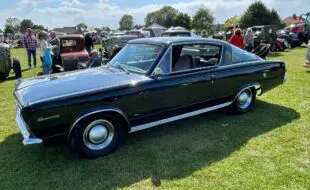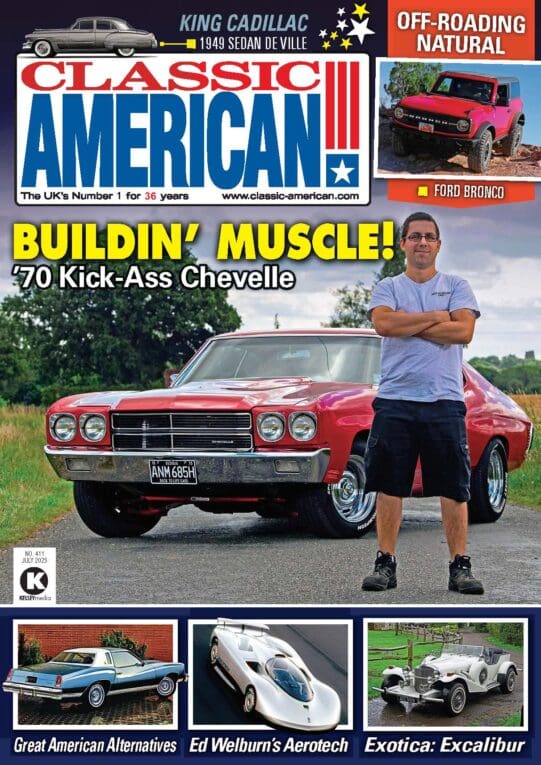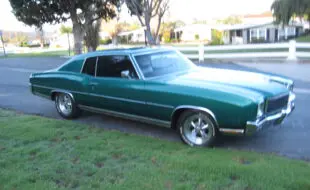From snowy Canada, Classic American meets one ’57 Ford that’s been resurrected by its enthusiastic owner, who managed to get it road-ready, nay rally-ready on a budget of buttons and scrapyard rescue parts…
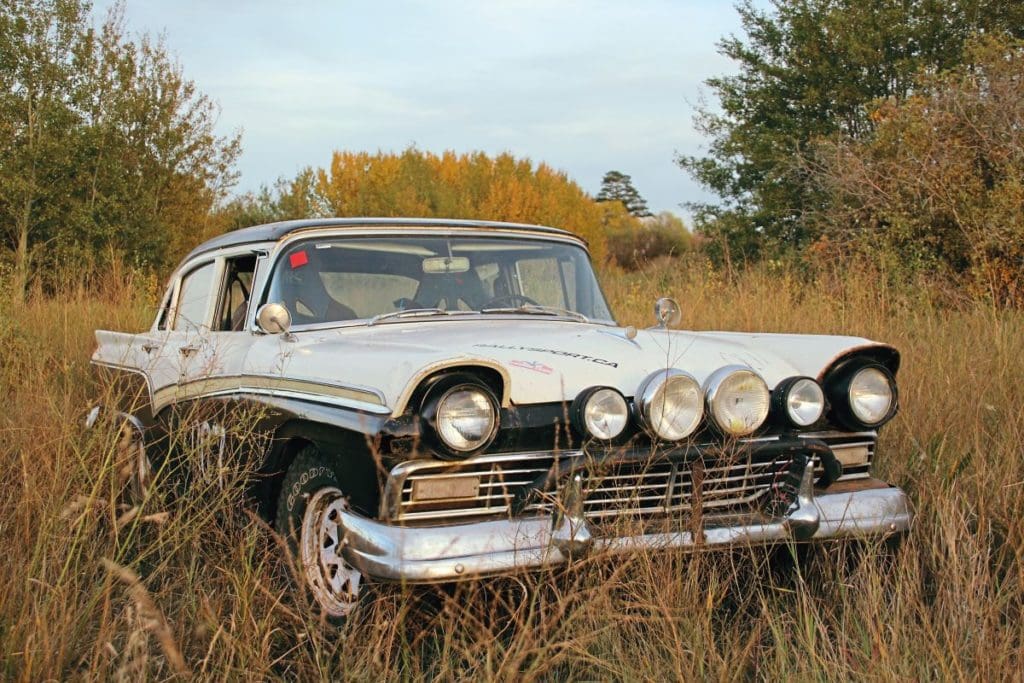
Words and images: Steve Swanson
Heading east out of Edmonton, Alberta, on Highway 21, the lights of the gas towers recede in your rear-view mirror. Soon the highway is just a single lane of asphalt in each direction. Under a wide, open sky, fields of grain and pasture stretch out to an indeterminate horizon, blotted by the dust clouds of a distant, working combine. Pull off the slim ribbon of highway on to a gravel Range Road and all you can hear is the creak and clonk of an occasional Lufkin pump (those ‘nodding donkey’ oil pumps still a familiar sight in the Mid-West) and the rustle of tall grass in the breeze. Welcome to the Canadian Prairies!
Enjoy more Classic American reading in the monthly magazine.
Click here to subscribe & save.
The story of the ’57 Ford Custom started the day Andrew Scott took that road out of Edmonton, to move into the tiny rural town of Holden. Unloading his heirloom ’62 Mercury Comet, a new neighbour dropped by to say hello. Ralph was 40 years Andrew’s senior, but the two men struck up a firm friendship united in their love for old cars. Andrew was 30 at the time, a motor mechanic and amateur racer with a history of hustling off-road trucks and rally cross mutants which stretches back to his teenage years. One night over a few brews, Ralph talked about reliving his youth, driving an old car again one more time, before his eyesight gave up. Andrew admitted he was missing having something to race.
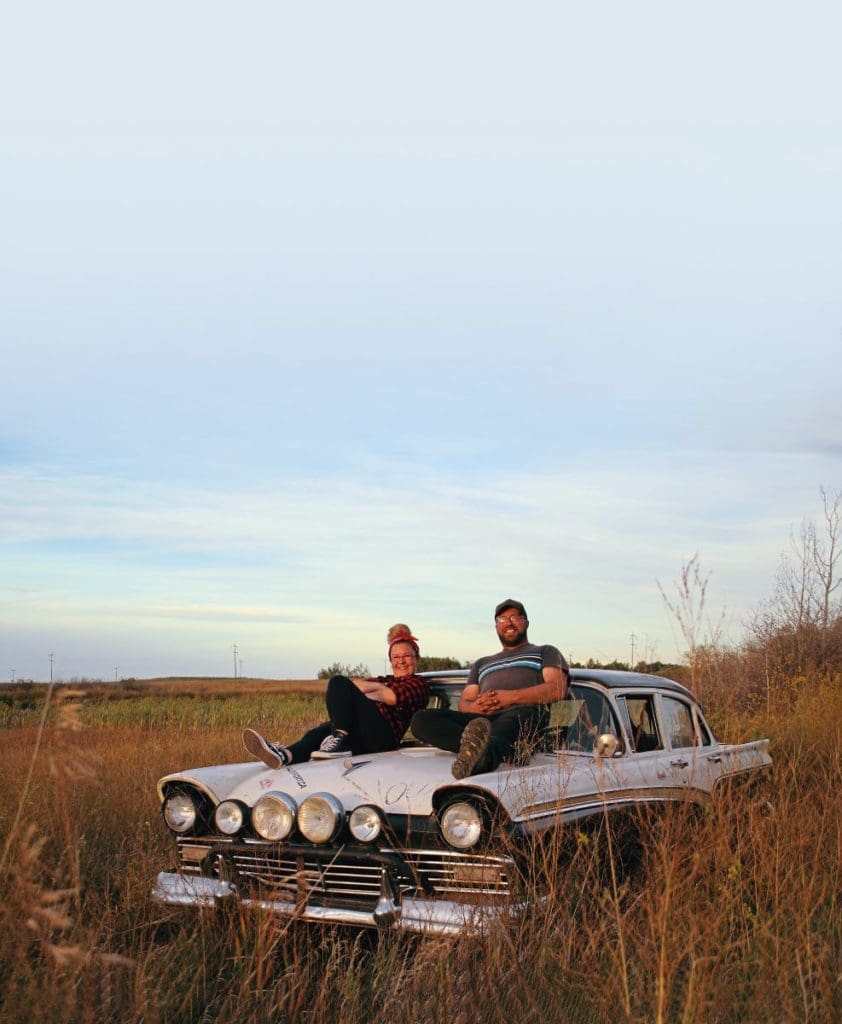
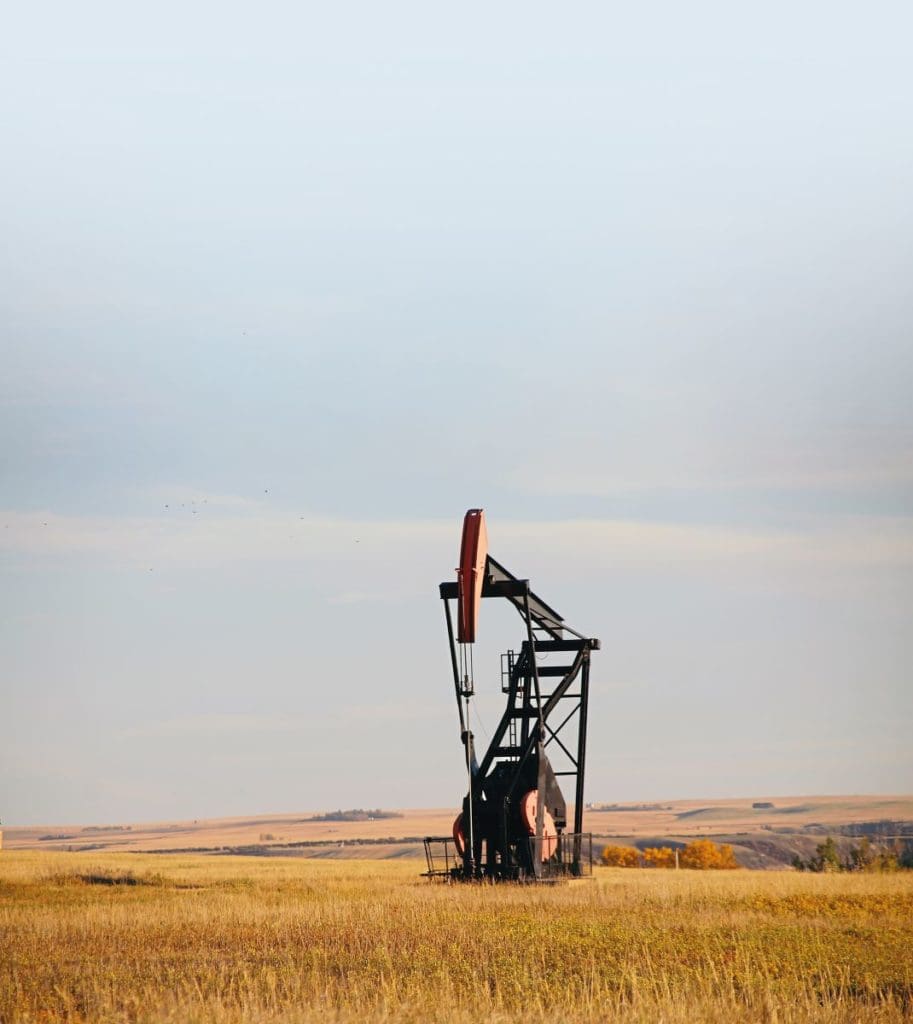
They hatched a plan. Ralph offered to put up the purchase money for an old car they could use, while Andrew would be responsible for keeping it running. With a tight budget they pored over the classifieds, finding the Ford for sale three hours away in Calgary. Andrew laughs as he recounts the story. “You could see it was nothing special, but it was running and driving and road legal. It was up for 2700 dollars. Ralph said he would do the negotiating. That was something to see. Well, I had to walk away. Ralph set about the car and the guy, lowballing him to the point he was insulting him!” Ralph’s ruthless old-school haggling netted them the Ford for 1400 Canadian dollars − about £900.
“We towed it back from Calgary and I knocked back the beers that night dreaming about racing. Ralph drove it that summer. He was like that teenage kid in a candy store. I kept working on it, keeping it up, then late that year the head gasket went and we took out the motor.” Their piggy bank was empty. The Ford sat that winter and most of the summer as Andrew planned to bring it back to life. “I had a small-block 302 motor with fuel injection from a ’92 Fox-body Mustang. The motor wasn’t crate fresh, it had something like 290,000km on it, but I knew I could fit it. My boss at the yard heard about my plans. He said: ‘If you don’t spend more than 50 cents you can have anything you want from the yard. Go for it!’
“That’s what I did. I used all junkyard parts down to the last hose clamp to fit the motor and get it up and running. I started on the Monday evening after work and every evening after that. I was done by Saturday night.” With the 302 plumbed in, Andrew used a transmission from a ’75 F100. “It fits pretty much right in, and it’s a tough unit.” The only new parts Andrew put on the car was a fresh set of ball joints. Hunting the scrapyard, he added a couple of extra leaves to the rear springs. He also salvaged a rear diff from a Ford Explorer to enable both rear wheels to provide some positive traction. Andrew smiles: “Yes, this old girl will do burnouts!”
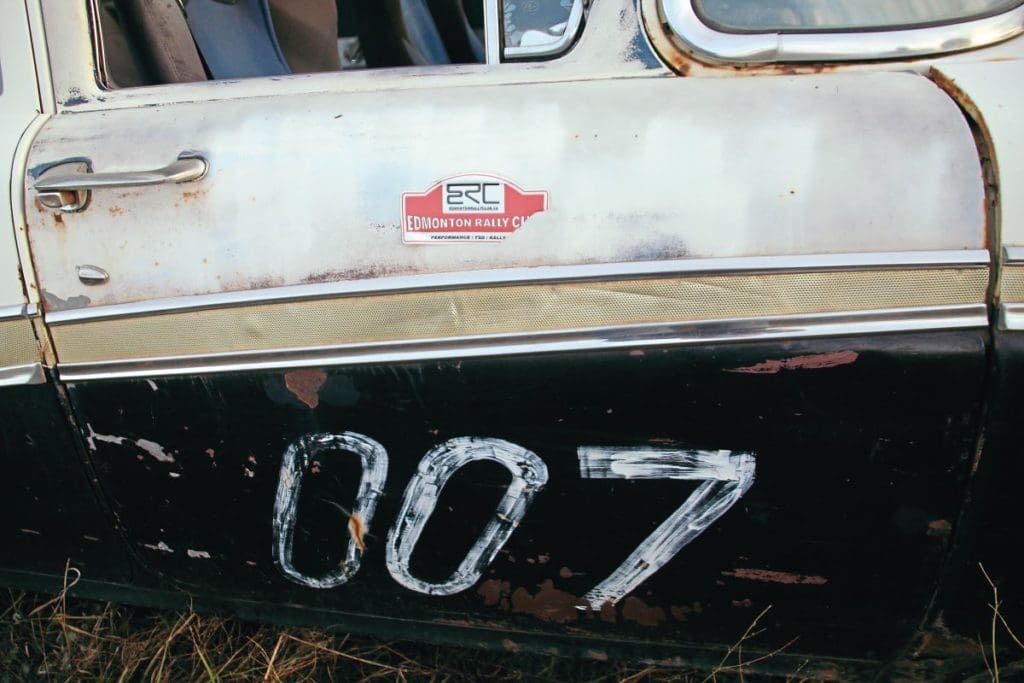
It was turning to winter again. Winter in Alberta can see temperatures as low as minus 40C. There wasn’t time or a heated garage to do any more modification. Even so, neither man wanted to see the car parked up any longer. “That’s about the time we had the bright idea of doing the Frozen Loon Rally.” The Frozen Loon is a time and distance endurance rally of some 600km, featuring a mix of regularity sections and all-out, competition stages. Competitors are given a route book consisting of Tulip diagrams and a list of speeds to adhere to on the regularities. The route is otherwise unknown.
“I was driving and Ralph was doing the maps, we did 600-something kilometres of nothing but backroads. I’d done rally racing, so I figured a time and distance rally was no big deal. It would be fun for Ralph, and we could just enjoy getting out. We fitted the big gripper tyres you see on it now (R235 75 15 Goodyear winter tyres) together with a skid plate and the spot lamps, then we dressed it up with the 007 numbers and ‘sponsorship’ from my garage. We weren’t taking it too seriously.” The Edmonton Rally Club runs the event. Turning up to join a field of souped-up Subarus and modified moderns, the Ford was the oldest vehicle by a half-century. It drew some curious glances and its fair share of doubters…
“They weren’t totally convinced they should let us run. The car had the 302 but was still on drum brakes and three-on-the-tree, and even vacuum wipers. We were out in the valley after one of the worst winters out here, with the wipers fighting the snow, and no door seals, so, yeah, it was draughty! Well in that car, in the snow on backroads, we were flat-out trying to make up for errors and the weather most of the time. It was everything I could do to keep that car on the road and poor Ralph was having to work really hard to read those maps while we were sliding all over the place. We were actually doing really well and then just before lunchtime we got lost, and when I say lost – did we ever. I ran the car flat out to try and catch up and we arrived at the lunch stop just as everyone else left. We had to make up an hour.
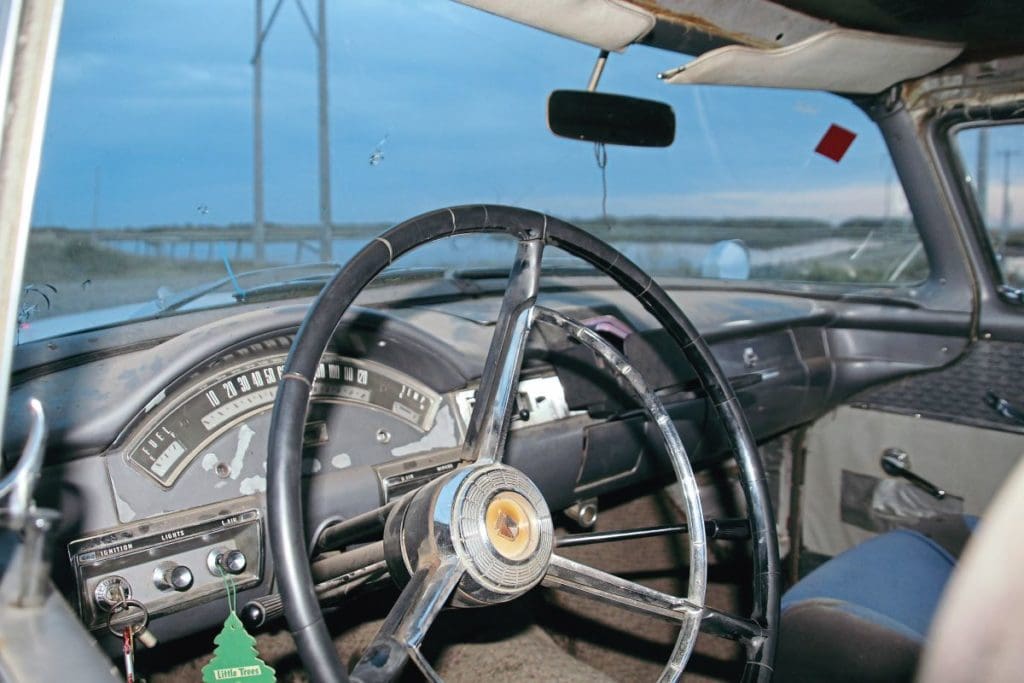
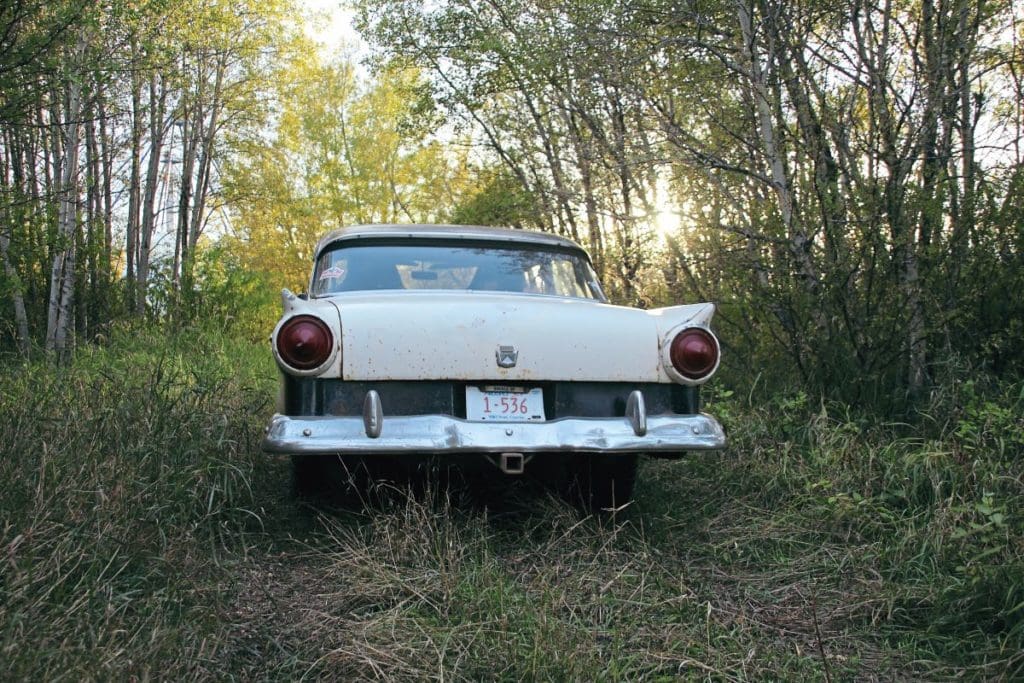
“The map book advises you of parts of the route where you need to apply caution, the worst being a triple caution – you should be creeping up to stuff like that to get through it. We were playing catch-up, so I told Ralph not to worry about the minor stuff, just to warn me about the triple cautions. We came over a crest and Ralph had missed one. The caution advisory said 15kmh. We were doing over 100kmh on a single-track backcountry logging road. After the crest the road did a 90 degree right with a cliff on one side.
“Every bit of knowledge I’ve gained from racing, I threw at that corner. I intentionally put the car into a snowbank to slow it – not enough, so I put it into the opposing bank. It actually climbed the snowbank and that action flicked us around the corner. That moment sort of defined the car and our relationship with the club and the fans.”
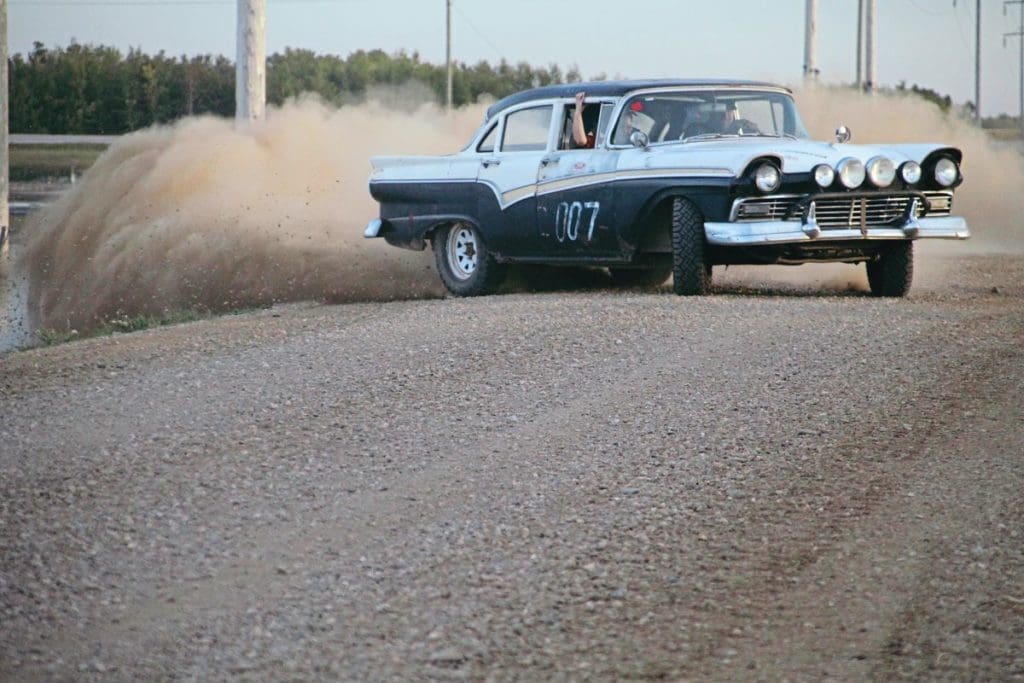
The pair took home class awards from the rally. The Loon was just the starting point. Andrew has added to the trophy cabinet, finishing in the top 20 of the championship. The Ford takes on whatever the Edmonton Rally Club can throw at it, from auto tests and ice circuits, to rally cross and track days. Three years on, those wipers have been upgraded, there are bucket seats and harnesses, but the car still retains its original suspension, three-on-the-tree, and still runs on drum brakes.
“It sounds crazy, but I don’t intend to change it to discs. The drums are strong with some decent pads. For most events they are fine, but on some road circuits they can struggle.”
For those times, Andrew came up with a bush mechanic hack to help them out. He drilled holes in the backing plates and formed some tin ducting to channel in some air for extra cooling. “It ain’t pretty, but it’s cheap and it helps.”
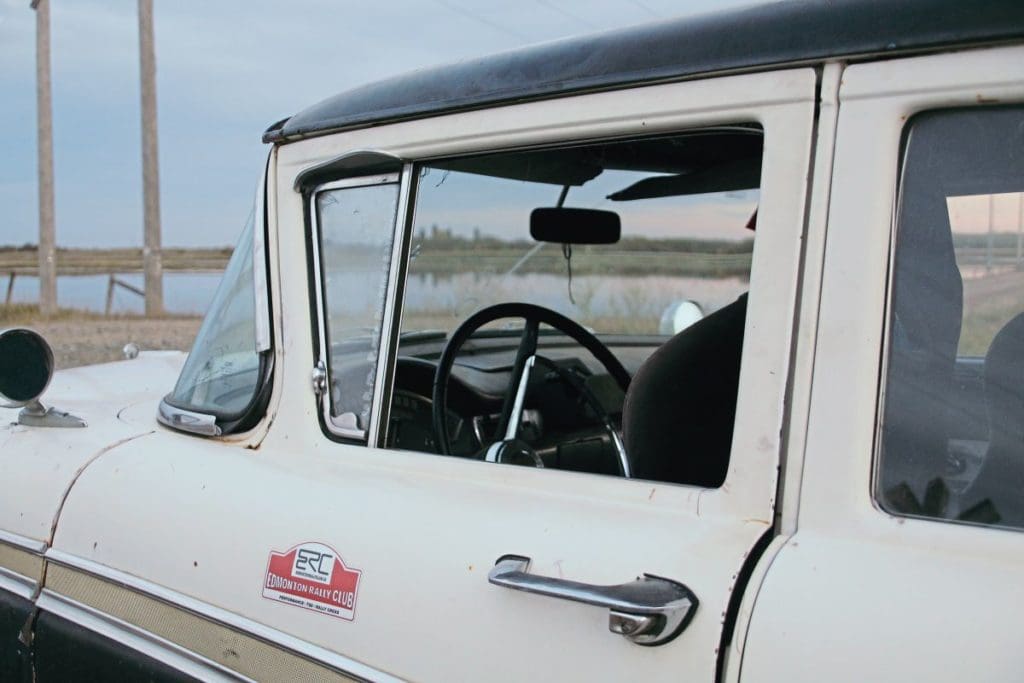
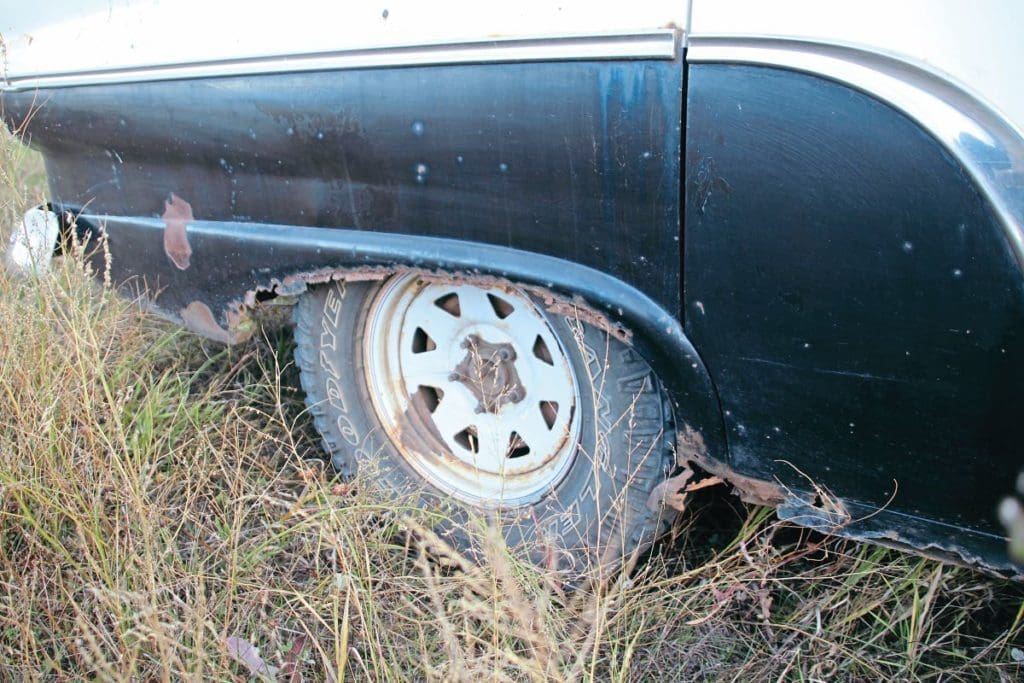
These days Ralph can no longer drive. His eyesight deteriorated to the point his licence was withdrawn. On a day of tears and laughter, he signed the car over to Andrew. The car still bears the livery of the Loon Rally, in part to honour Ralph. It has also become the Ford’s trademark, winning fans at every event. There’s a new co-driver now in the shape of Andrew’s partner, Jen. Encouraged to have a go behind the wheel, it’s led her to take her NASCC race licence at the Castrol Raceway in Edmonton, something she never imagined she would do.
“What I love best is people are happy to see us out in the car. They can’t believe the events we take on, and we get a lot of attention, from waves and thumbs up from people, to gas station conversations about the car.” Creased and dented on every panel, rusty around the edges, the ’57 cuts a striking pose doing what it does best, going sideways on ice and gravel at every opportunity. The spot lamps and the winter grippers, coupled with its faded two-tone bodywork, add to its down-at-heel charm. The fact that this car goes out and plays on tracks and tests along with far more technically advanced machinery is not lost on the fans or the other drivers. Drum brakes, a three-on-the- tree and no power steering with five turns of lock can be viewed as a handicap. Andrew sees it differently.
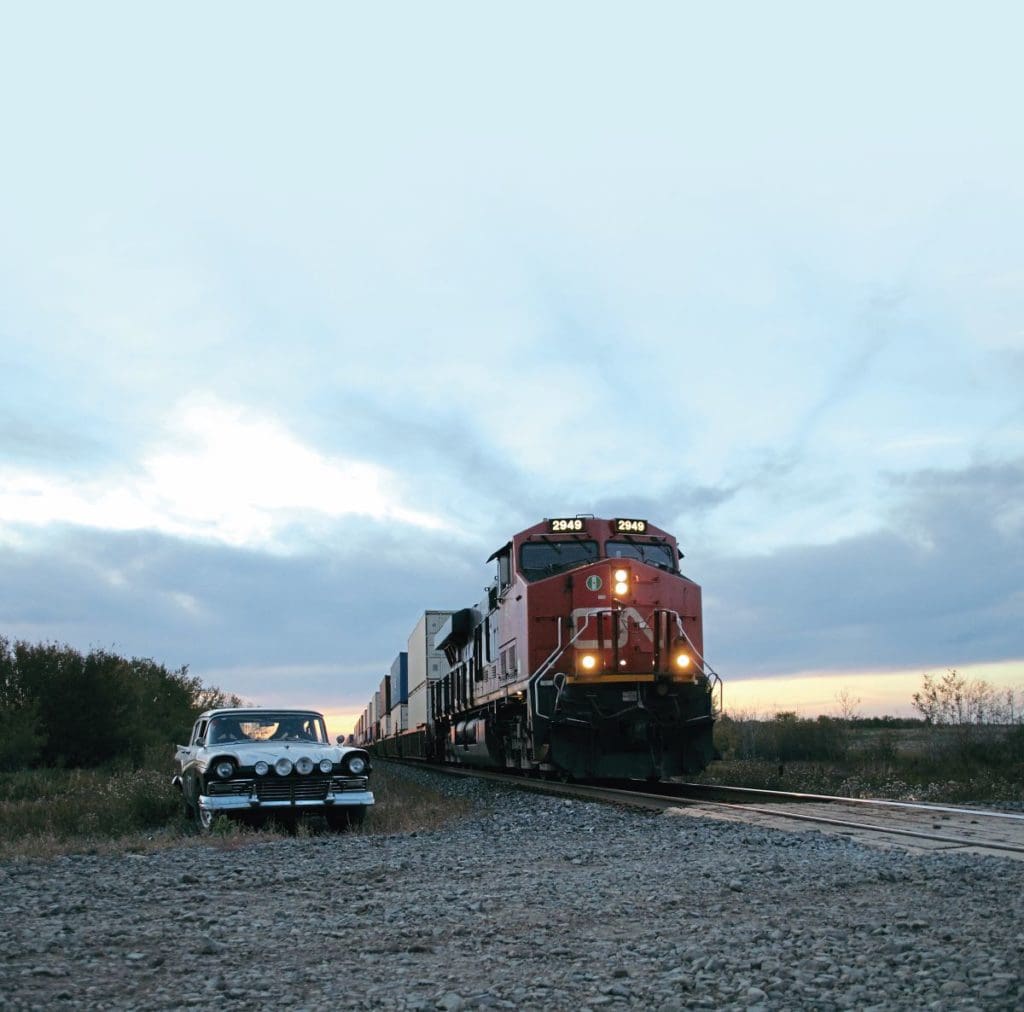
“We don’t ever get frustrated with where we end up. At the end of the day, you drive your own drive. It is surprising how we get respect from drivers of hotter machinery. Best for me is when Jen drives. When she hops out the car after racing it the other guys are impressed that this ‘little girl’ hauls a vintage, three-on-the-tree, V8 Ford. There’s no plan to upgrade or restore the car. Put simply, the old Ford is just too far gone.
“That car is pretty lacy. It has been patched, over patched work, and it’s not been done nicely. At some point in its life it was in an accident, you can see the trunk does not fit correctly. It really needs attention now. The body is barely mounted to the frame, the front fenders are coming away. It will always be a race car, until it can’t race any more.” When that day comes, Andrew is prepared. He’s acquired another ‘57 shell. There will be a ’57 sequel. Until then, this old Ford will do what it does best, creating smiles per mile while hanging its tail out somewhere on a prairie backroad.
